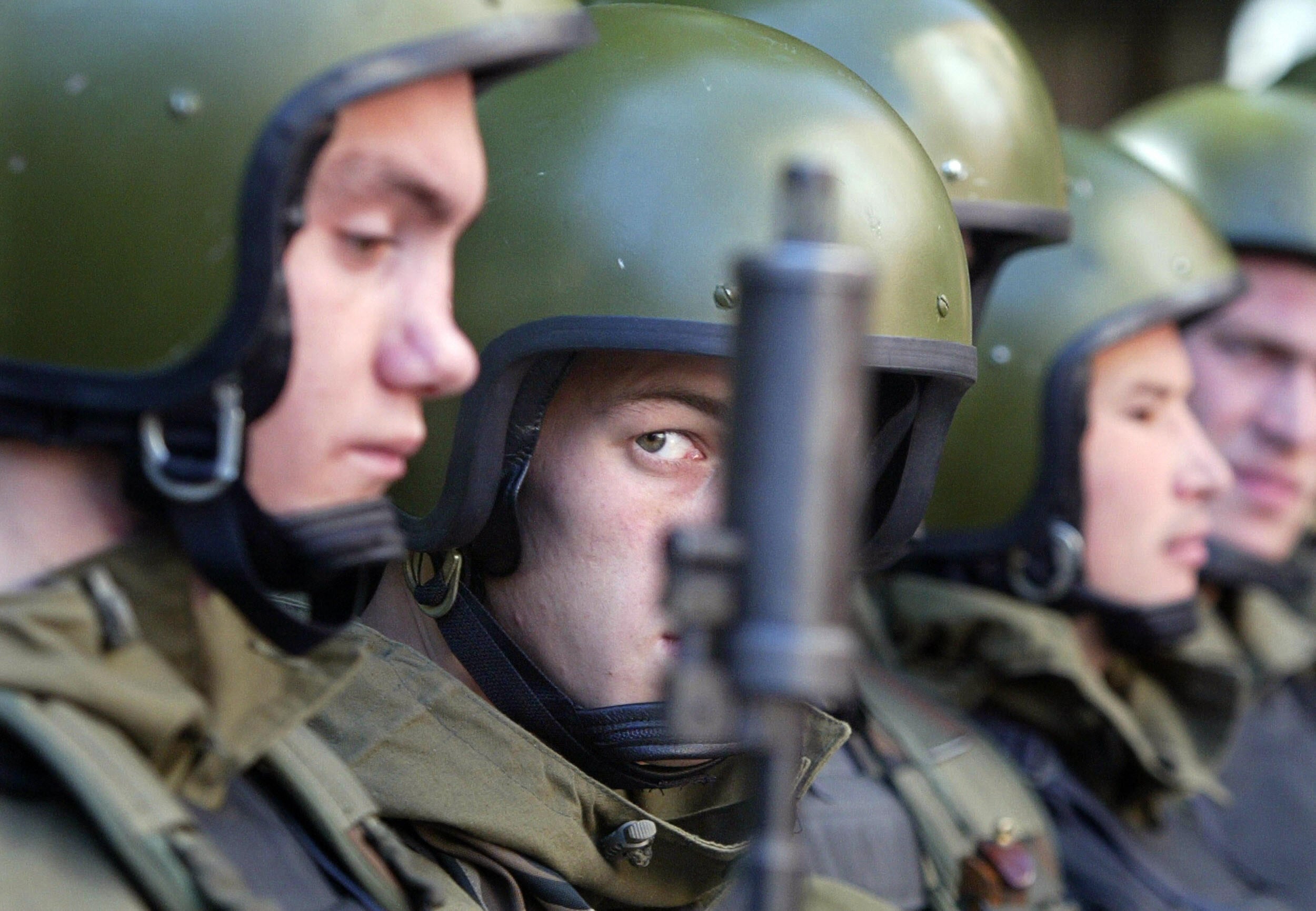LONDON — The British Army, not unlike its closest allies such as the United States, is struggling with how to effectively operate below the threshold of physical conflict often referred to as the gray zone, where information warfare is waged.
It’s no secret Russia executes effective operations in this area, such as misinformation campaigns to sway public opinion as a means of damaging its adversaries without triggering an armed conflict.
Gaining the “information advantage” is critical to operating in such a gray zone of conflict, Brig. Jules Buczacki, the commander of the U.K. 1st Intelligence, Surveillance and Reconnaissance Brigade, said Sept. 9 at DSEI’s Land Capability Conference.
DSEI is a major European defense conference and exposition held in London.
RELATED

“Information advantage is principal terrain in which these new battles are being fought,” he said.
Land forces have an important role to play in “information maneuver” — operating in the gray zone below the threshold of traditional warfare — because the ground, or geography, contains the infrastructure for the flow of information, according to Buczacki.
With that in mind, the British Army is researching how to put “virtual boots on the ground” to effectively operate against adversaries in the information domain, Buczacki said.
The information maneuver concept is about “bringing together the people, processes and technologies to enable us to understand, communicate, persuade and protect using all means in the virtual and cognitive dimensions,” he added.
The British Army is working “hand and glove with traditional forms of force to integrate information capabilities with the land environment to establish unity of effort between [intelligence, surveillance and reconnaissance], cyber and electronic warfare, information activities, networks, and counterintelligence,” he explained.
But the Army is still “in the foothills” of figuring it out, he noted, as it seeks rapid development and experimentation.
Highlighting the challenges to operating in the virtual world, Maj. Gen. Tom Copinger-Symes, the director of military digitization for the U.K. Joint Forces Command, said there are “random generals enthusiastically engaging with engagement online,” joining the ranks of the Twitterati, the “LinkedInies,” the Facebookers and the Instagrammers.
“It’s pretty half-assed. I’m one of them,” he said. “It’s pretty unstructured. And there’s some people in the commentariat … who constantly berate us for how ineptly we are doing it.”
Yet, while the military’s social media engagement needs work, “what you are seeing is a bunch of generals doing what they have not done in the rest of their careers and that is experiment in a space they don’t understand, that they don’t know the answers to but nevertheless they are out there experimenting and they are giving it a good old wallop,” Copinger-Symes said.
If the military can tap into the “willingness to make a fool of yourself in public” in the virtual community, “there’s just a chance that we might get over the game line and start operating in this funny old space that we live in,” he added.
Operating in the information space is a concept that has proven its utility with the British Army’s war-fighting division during training with the U.S. Army, Buczacki noted.
“The exercise they successfully tested on is called ‘Warfighter,’ ” he said, “But we recognize ‘Warfighter’ is not yet the same thing as ‘war fighting.’ To make our capabilities truly competitive in the virtual and human domains demands a transformation in the way we train and to get our capabilities and people fit [to use] them in the real world.”
Jen Judson is an award-winning journalist covering land warfare for Defense News. She has also worked for Politico and Inside Defense. She holds a Master of Science degree in journalism from Boston University and a Bachelor of Arts degree from Kenyon College.








